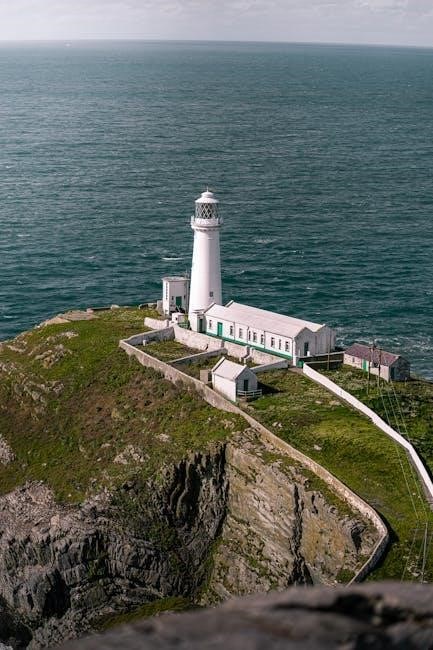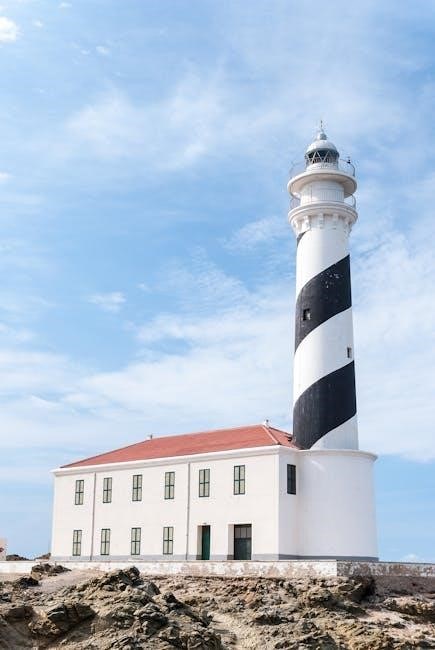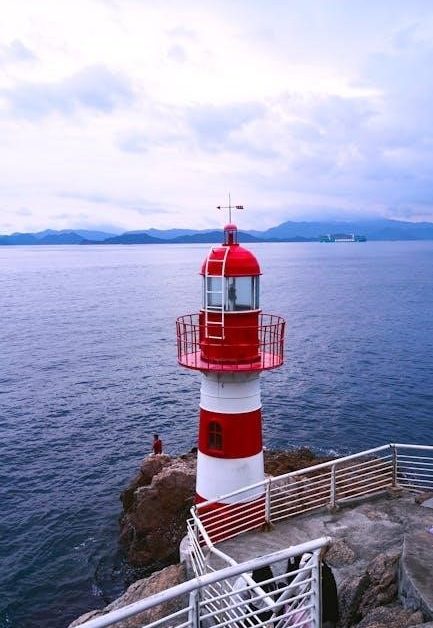Jellyneo is a premier Neopets fansite offering comprehensive guides and resources for restoring Roo Island, a beloved but neglected Neopian landmark, through community-driven efforts and dedication.
1.1 Overview of Jellyneo as a Neopets Fansite
Jellyneo is a dedicated Neopets fansite renowned for its extensive resources, guides, and tools tailored to enhance gameplay and community engagement. Established to support players, it offers detailed walkthroughs, item databases, and customizable trackers. Jellyneo’s restoration guides for Roo Island are particularly popular, providing step-by-step instructions and essential checklists. The site fosters collaboration by sharing tips and progress tracking tools, making it a hub for Neopets enthusiasts. Its user-friendly interface and comprehensive coverage of Neopian activities have solidified its reputation as an indispensable resource for players aiming to restore Roo Island to its former glory.
1.2 The Significance of Roo Island in Neopets
Roo Island holds a special place in Neopets as a vibrant hub for activities, events, and community engagement. Once thriving with life, the island gradually fell into disrepair, prompting a collective effort to restore it. Its significance lies in its historical value and the joy it brought to players. The island’s restoration is not just about rebuilding structures but also about reviving a beloved part of Neopets’ culture. Jellyneo plays a crucial role by providing resources and guides to aid players in this endeavor, ensuring the community remains involved and dedicated to preserving Roo Island’s legacy for future generations.

1.3 Brief History of Roo Island’s Restoration Efforts
Roo Island’s restoration began with community-driven initiatives after its decline in Neopets. Early efforts focused on debris removal and basic infrastructure repair, led by dedicated players. Jellyneo played a pivotal role by providing resources and organizing events to rally support. Despite challenges like resource shortages and limited participation, the community persisted, gradually reviving key landmarks. Over time, collaborative efforts and strategic planning led to noticeable progress, inspiring more players to join. The restoration of Roo Island stands as a testament to the power of unity and determination within the Neopets community, with Jellyneo serving as a cornerstone for these endeavors.

Understanding the Restoration Process
Restoring Roo Island involves careful planning, resource management, and community collaboration to revive its infrastructure and ecosystem, ensuring a sustainable and thriving environment for future generations.
2.1 Key Objectives of Restoring Roo Island
The primary goals of restoring Roo Island focus on reviving its ecosystem, rebuilding infrastructure, and ensuring sustainability. Key objectives include reintroducing native flora and fauna, reconstructing damaged buildings, and creating pathways for easier navigation. Additionally, efforts aim to restore historical landmarks, enhance community spaces, and promote biodiversity. Sustainability is a top priority, ensuring the island thrives for future generations. By achieving these objectives, Roo Island can once again become a vibrant hub for Neopians, offering both functional and recreational benefits while preserving its unique charm and cultural significance.
2.2 Essential Resources and Materials Needed
Restoring Roo Island requires a variety of resources, including wood, stone, and Neopoints for construction and repairs. Tools like shovels, hammers, and shovels are crucial for clearing debris. Additionally, food and potions are needed to sustain workers and boost morale. Players can also craft essential items like planks, nails, and paint using materials found or purchased in Neopia. Community contributions, such as donated items or shared knowledge, further accelerate progress. Efficient resource management ensures the restoration stays on track without unnecessary delays or setbacks.
2.3 Timeline and Phases of Restoration
The restoration of Roo Island is divided into clear phases, ensuring a structured approach. Phase 1 focuses on debris removal and initial assessments, lasting approximately 2-3 months. Phase 2 involves rebuilding core infrastructure, such as roads and essential buildings, over 4-6 months. Phase 3 centers on reviving the ecosystem, reintroducing native species, and restoring habitats, spanning 6-9 months. Phase 4 involves community engagement and long-term maintenance to sustain the island’s vitality. The overall timeline is estimated at 18-24 months, depending on resource availability and community participation. Regular updates and adaptability are crucial to meet milestones effectively.
Preparing for Restoration
Begin by gathering essential resources, planning strategies, and recruiting a skilled team to ensure a strong foundation for the restoration of Roo Island.
3.1 Gathering Initial Resources
Gathering initial resources is crucial for kickstarting the restoration of Roo Island. Begin by collecting essential materials like wood, stone, and Neopoints, which are vital for construction and repairs. Utilize tools such as shovels and gloves to clear debris efficiently. Food and potions are also necessary to sustain your Neopets helpers during the process. Visit the Trading Post or Marketplace to acquire these items or craft them using available blueprints. Engage with the community to trade resources or collaborate on crafting. A well-stocked inventory ensures a smooth start to your restoration journey, setting the foundation for successful rebuilding efforts.
3.2 Building a Strong Foundation
Building a strong foundation is crucial for the successful restoration of Roo Island. This involves assessing the island’s current state, prioritizing tasks, and creating a detailed plan. Start by allocating resources wisely, ensuring materials are distributed evenly across key areas. Engage the community by recruiting volunteers and specialists, fostering collaboration and shared responsibility. Utilize tools and guides from Jellyneo to streamline the process and track progress effectively. Establish clear communication channels to keep everyone informed and motivated; Celebrate small milestones to maintain morale and encourage continued effort. A solid foundation sets the stage for sustainable growth and long-term success.
3.3 Recruiting a Team of Helpers
Recruiting a dedicated team is crucial for restoring Roo Island efficiently. Start by reaching out to fellow Neopians through in-game messaging or community forums. Join guilds focused on restoration projects to connect with passionate players. Clearly communicate your vision and goals to inspire others to join your cause. Offer roles based on skills, such as debris clearing or crafting, to ensure everyone contributes meaningfully. Regularly update your team on progress and celebrate small victories to maintain morale. A collaborative effort not only speeds up the process but also fosters a sense of community and shared achievement.

Step-by-Step Restoration Guide
Begin by clearing debris, then focus on rebuilding infrastructure like roads and buildings, and finally revive the island’s ecosystem to restore Roo Island to its former glory.
4.1 Clearing Debris and Obstacles
Clearing debris and obstacles is the first step in restoring Roo Island. Use tools like shovels, pickaxes, and gloves to remove rubble and overgrown vegetation. Prioritize pathways and public areas to ensure accessibility. Separate recyclable materials for future use, reducing waste. Engage your team to speed up the process, assigning tasks based on strengths. Regular breaks and safety measures are crucial to avoid exhaustion and accidents. Document progress to track improvements and stay motivated. A clean slate sets the foundation for rebuilding, so thoroughness is key. Community involvement can also help gather resources efficiently, fostering collaboration and shared responsibility for the island’s revival.
4.2 Rebuilding Infrastructure
Rebuilding infrastructure is a critical step in restoring Roo Island. Focus on constructing essential buildings like homes, shops, and community centers using materials gathered earlier. Ensure structures are durable and meet the needs of returning inhabitants. Prioritize utilities such as water supply systems and energy sources to create a sustainable environment. Use Neopoints wisely to acquire necessary tools and labor. Consider adding eco-friendly features like solar panels or wind turbines to promote long-term sustainability. Accessibility is key, so design pathways and public spaces to accommodate all Neopians, including those with disabilities. This phase lays the foundation for a thriving, self-sufficient community.

4.3 Reviving the Local Ecosystem
Reviving Roo Island’s ecosystem involves reintroducing native flora and fauna, ensuring a balanced environment. Plant native trees and flowers to restore habitats, and release species like the Roo Island Newt. Monitor progress to prevent overpopulation or invasive species. Use resources from Jellyneo to identify rare plants and animals. Collaborate with Neopians to share knowledge and tools. Regularly clean pollution and debris to create a thriving ecosystem. Maintain water quality and soil health to support biodiversity. Document progress to track improvements and adapt strategies as needed. A healthy ecosystem attracts visitors and boosts morale, making restoration efforts worthwhile.
Managing Resources Effectively
Budgeting and allocating Neopoints wisely ensures sustainable progress in restoring Roo Island, while crafting essential items maximizes efficiency and supports long-term goals effectively always.
5.1 Budgeting and Resource Allocation
Budgeting and resource allocation are critical for efficiently restoring Roo Island. Start by assessing your total Neopoints and dividing them into categories like materials, labor, and unexpected expenses. Prioritize essential items, such as construction materials and tools, to ensure progress. Regularly track your spending to avoid overspending and maintain a balanced budget. Consider setting aside a portion of your Neopoints for emergencies or opportunities. Efficient allocation ensures resources are used wisely, maximizing restoration progress without financial strain. Regular financial audits can help identify areas for improvement, keeping your project on track and within budget.
5.2 Utilizing Neopoints Wisely
Effective Neopoints management is crucial for restoring Roo Island. Prioritize spending on essential materials and labor to maximize progress. Allocate funds to high-impact items like construction supplies and rare resources. Avoid unnecessary purchases to maintain a steady budget. Use Jellyneo’s price guides to identify cost-effective options and invest in items that appreciate over time. Consider crafting essential tools or furniture to save Neopoints. Regularly review your budget to ensure resources are being used efficiently. By strategically utilizing Neopoints, you can accelerate restoration efforts and achieve long-term goals without financial setbacks.

5.3 Crafting Essential Items
Crafting essential items is vital for restoring Roo Island efficiently. By utilizing resources like wood, stone, and fabric, you can create tools and materials needed for construction and repairs. Crafting not only saves Neopoints but also ensures you have what you need on hand. Focus on crafting items like shovels, hammers, and building materials to speed up progress. Use blueprints to guide your crafting process and ensure items are durable. Additionally, crafting decorative items can boost morale and attract visitors once restoration is underway. Regularly check crafting recipes and optimize your workshop to maximize output and minimize waste.

Engaging the Community
Engaging the community involves collaboration, hosting events, and sharing progress to foster teamwork, motivation, and a sense of shared accomplishment among all participants effectively.
6.1 Collaborating with Other Players
Collaborating with other players is essential for restoring Roo Island. By joining forces, players can share resources, expertise, and strategies, making the process more efficient and enjoyable. Utilize Neopets’ guild system or messaging features to connect with like-minded individuals. Coordinate efforts to gather materials, complete tasks, and tackle challenges together. Sharing tips and progress can motivate the group and ensure everyone contributes effectively. Regular communication helps maintain momentum and addresses obstacles promptly. Strong teamwork fosters a sense of community, making the restoration of Roo Island a collective achievement. Collaborative efforts not only enhance productivity but also build lasting friendships within the Neopets community.
6.2 Hosting Events to Boost Morale
Hosting events is crucial for maintaining team spirit during the restoration of Roo Island. Organize activities like competitions, workshops, or community gatherings to celebrate progress and foster camaraderie. Use platforms like YouTube to live-stream events, allowing broader participation. Incorporate interactive elements, such as Q&A sessions or mini-games, to engage attendees. Recognize contributors during these events to motivate others. Regular updates and shared successes can significantly uplift morale. Ensure events are inclusive, catering to diverse interests within the community. By creating a sense of achievement and unity, these events will keep the team motivated and dedicated to the restoration efforts.
6.3 Sharing Progress and Tips
Sharing progress and tips is crucial for fostering a supportive community during Roo Island’s restoration. Regularly updating the community on milestones achieved and challenges faced helps maintain transparency and motivation. Players can share tips on resource management, efficient crafting, and effective strategies through forums or social media. Highlighting successes, no matter how small, encourages others to stay engaged. Additionally, documenting progress in journals or galleries provides a visual record of improvements. This collaborative approach not only strengthens teamwork but also inspires others to contribute their skills and ideas, ensuring a collective effort toward restoring Roo Island to its former glory.
Overcoming Challenges
Restoring Roo Island requires addressing common obstacles like resource shortages and team motivation. Strategies include budgeting, collaboration, and learning from past mistakes to ensure continuous improvement.
7.1 Common Obstacles During Restoration
Restoring Roo Island often encounters challenges like resource scarcity, time constraints, and coordination issues among team members. Environmental factors and unexpected costs can also hinder progress, requiring adaptive strategies to overcome these obstacles effectively.
7.2 Strategies to Tackle Difficulties
When facing challenges during Roo Island’s restoration, employ strategic problem-solving techniques. Prioritize resource management by budgeting Neopoints effectively and crafting essential items. Collaborate with the community to share knowledge and tools, ensuring collective progress. Analyze past mistakes to refine strategies and adapt to unforeseen obstacles. Utilize Jellyneo’s guides for tailored solutions and maintain open communication with your team to address concerns promptly. By staying organized and proactive, you can overcome difficulties efficiently, ensuring the restoration process remains on track and achieves its goals successfully.
7.3 Learning from Past Mistakes
Learning from past mistakes is crucial for the successful restoration of Roo Island. Many players have faced challenges such as poor resource allocation, lack of planning, and insufficient community engagement. By analyzing these errors, you can avoid repeating them. For instance, documenting progress and seeking feedback from the community can help identify weaknesses early on. Additionally, adapting strategies based on previous failures ensures a more efficient restoration process. Remember, every setback provides valuable insights, and continuous improvement is key to achieving long-term success in reviving Roo Island.
Celebrating Milestones
Celebrate progress by recognizing achievements, rewarding team members, and documenting milestones to maintain motivation and track the restoration journey of Roo Island effectively.
8.1 Recognizing Achievements
Recognizing achievements is crucial for maintaining morale and motivation during the restoration of Roo Island. Celebrate milestones, no matter how small, to acknowledge progress and dedication. Use key metrics to track success, such as the number of resources collected or areas rebuilt. Showcase achievements in community spaces or journals to inspire others and foster a sense of pride. Regular recognition reinforces the importance of teamwork and individual contributions, ensuring sustained effort and enthusiasm throughout the restoration journey.
8.2 Rewarding Team Members
Rewarding team members is crucial for maintaining morale and motivation during the restoration of Roo Island. Consider offering exclusive items, Neopoints, or special privileges as incentives. Publicly recognizing contributions can also boost spirits. Hosting small celebrations or team-building activities fosters camaraderie. Ensure rewards align with the project’s goals and are distributed fairly. This not only encourages continued effort but also strengthens team cohesion, making the restoration process more enjoyable and successful. Regular acknowledgment of hard work keeps the team engaged and committed to the shared vision of revitalizing Roo Island.
8.3 Documenting Progress
Documenting progress is crucial for tracking restoration milestones and sharing achievements with the community. Use journals, screenshots, or videos to capture each stage of Roo Island’s transformation. Regularly update logs to reflect completed tasks, challenges overcome, and lessons learned. Platforms like YouTube or Jellyneo forums can showcase your journey, inspiring others and fostering collaboration. Detailed records also help in analyzing what strategies worked best, allowing for better planning in future projects. By maintaining a comprehensive archive, you create a valuable resource for fellow restorers while celebrating your contributions to Roo Island’s revival.

Maintaining and Upgrading
Regularly inspect and repair structures, while implementing upgrades to enhance functionality and aesthetics, ensuring Roo Island remains vibrant and sustainable for future generations to enjoy.
9.1 Regular Maintenance Tasks
Regular maintenance is crucial to sustain Roo Island’s restoration progress. Daily tasks include inspecting buildings, cleaning debris, and ensuring infrastructure remains stable. Assign a team to monitor water sources, vegetation, and pathways, preventing decay. Schedule weekly checks on newly rebuilt structures to address minor issues before they escalate. Encourage community members to report damages promptly. Rotate responsibilities to avoid burnout and maintain motivation. Use Jellyneo’s resources to track progress and identify areas needing attention. Consistent upkeep ensures the island remains vibrant and functional, fostering a thriving environment for both inhabitants and visitors. Regular maintenance is the backbone of long-term success.
9.2 Implementing Upgrades

Upgrades are crucial for enhancing Roo Island’s infrastructure and sustainability. Start by assessing current structures to identify areas needing improvement, such as buildings, roads, or utilities. Use resources like materials and Neopoints to fund upgrades, ensuring allocations align with long-term goals. Prioritize upgrades that boost functionality, safety, and aesthetics. Engage your team in brainstorming innovative solutions and delegate tasks efficiently. Regularly monitor progress and adapt plans as needed. Upgrades not only improve the island’s appeal but also create a better environment for its inhabitants. By continuously implementing improvements, you ensure Roo Island remains thriving and resilient for future generations.
9.3 Adapting to New Challenges
Adapting to new challenges is crucial during the restoration of Roo Island. As you progress, unexpected obstacles may arise, such as resource shortages or changing community needs. Stay flexible by regularly assessing your strategies and incorporating feedback from your team. Utilize Jellyneo’s resources to identify innovative solutions and remain updated on the latest restoration techniques. Building a resilient plan allows you to pivot when necessary, ensuring long-term success. Embrace challenges as opportunities to grow and improve your approach, fostering a dynamic and adaptive restoration process that aligns with the evolving needs of Roo Island and its community.
Monitoring Progress
Regularly track key metrics, analyze success rates, and adjust strategies to ensure restoration stays on course, using tools like checklists and progress reports for accountability.
10.1 Tracking Key Metrics
Tracking key metrics is essential to monitor the progress of Roo Island’s restoration. This includes measuring the percentage of debris cleared, infrastructure rebuilt, and ecosystem revival. Regularly updating these metrics helps identify areas needing attention. Utilize tools like spreadsheets or apps to log progress and share updates with the community. Celebrate milestones to maintain motivation. Adjust strategies based on metric trends to ensure efficient use of resources. Consistent tracking ensures the restoration stays on course and aligns with long-term goals. Transparent reporting fosters trust and collaboration among team members. Data-driven decisions lead to a successful and sustainable restoration of Roo Island.
10.2 Analyzing Success Rates
Regularly analyzing success rates is crucial for understanding the effectiveness of restoration efforts. By tracking key metrics such as progress milestones, resource usage, and community engagement, you can identify areas of improvement. Utilize tools like spreadsheets or analytics software to monitor trends and adjust strategies accordingly. Celebrate achievements to maintain morale, while addressing gaps in performance. This data-driven approach ensures that resources are allocated efficiently, maximizing the impact of your restoration work. Continuous evaluation helps refine methods, leading to better outcomes and a more sustainable restoration process for Roo Island.
10.3 Adjusting Strategies as Needed
Adapting your approach is crucial for successful restoration. Regularly review progress, identify bottlenecks, and adjust plans to optimize efficiency. Utilize feedback from team members and the community to refine strategies. Stay flexible to address unforeseen challenges and incorporate new ideas. Continuous improvement ensures long-term success and keeps the project aligned with its goals. By staying proactive and open to change, you can overcome obstacles and achieve a thriving Roo Island. This iterative process fosters growth and ensures the restoration remains on track, even as circumstances evolve.
11.1 Final Thoughts on Restoration
Restoring Roo Island is a testament to community dedication, reviving a cherished Neopian landmark and fostering a vibrant ecosystem for future generations to enjoy and protect;

Restoring Roo Island is a testament to community spirit and dedication. Through perseverance, the island has transformed from neglect to vibrancy, showcasing the power of collective effort; Overcoming challenges and learning from setbacks have been key to success. The journey highlights the importance of teamwork, creativity, and adaptability. As the island thrives, it stands as a symbol of what can be achieved when passion meets determination. The restoration of Roo Island not only revives a beloved Neopian landmark but also inspires future projects, proving that even the most daunting tasks can be accomplished together. Celebrate milestones and continue nurturing this revitalized gem.
11.2 Encouragement for Future Projects
Restoring Roo Island is just the beginning! The skills and determination you’ve gained can inspire future projects, fostering creativity and perseverance. Embrace new challenges, collaborate with the community, and continue making Neopia a better place. Every achievement, no matter how small, contributes to a larger impact. Keep exploring, learning, and growing—your efforts will motivate others to join in and make a difference. The journey of restoration is rewarding, and with each success, you’ll be ready to tackle even bigger endeavors. Stay passionate, stay dedicated, and remember that every project is an opportunity to create something extraordinary for Neopia’s future.
11.3 Final Tips for Success
Stay organized and maintain clear communication with your team to ensure everyone is aligned with goals. Regularly review progress and adapt strategies as needed. Celebrate milestones to keep morale high and recognize individual contributions. Be patient and persistent, as restoration is a long-term commitment. Utilize resources wisely and continuously seek feedback from the community. Document every step to track improvements and share knowledge for future projects. Finally, embrace creativity and innovation to overcome challenges and achieve a thriving, restored Roo Island.
